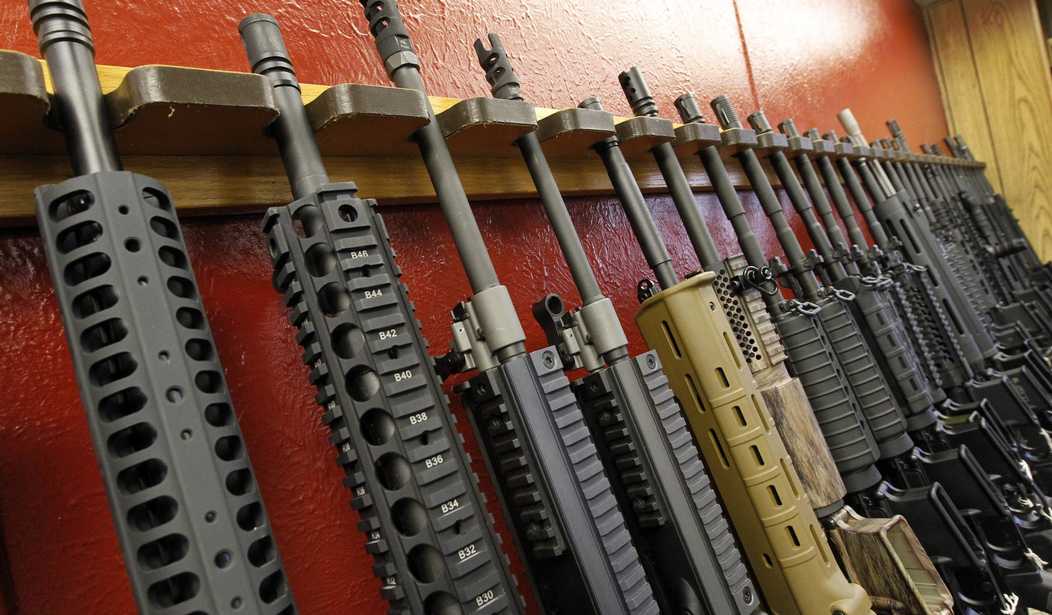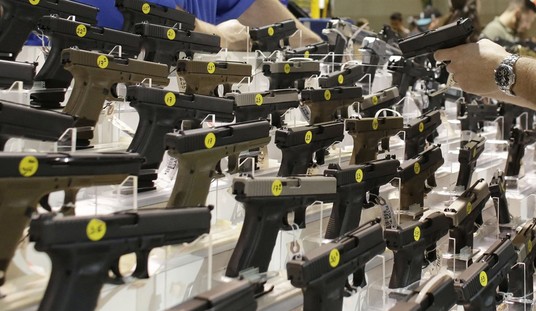The staff at the Everytown-supported website “The Trace” have done an amazing job of integrating their anti-gun viewpoints into mainstream media over the past few years. Reporters for the pro-gun control website have seen their bylines at USA Today and more than 150 other news outlets, while Trace reporter Jennifer Mascia was named to CNN’s “Guns in America” team last October.
While mainstream media outlets have incorporated The Trace’s reporting into their own coverage, the views of their staffers are anything but mainstream, as Mascia reminded us on X/Twitter on Monday.
To the gun lobby and its media, a terrorist attack perpetrated with guns is an opportunity to sell more guns. Happy shopping! pic.twitter.com/SKymIxR1vR
— Jennifer Mascia (@JenniferMascia) October 9, 2023
As Mascia was quickly reminded by Second Amendment attorney Kostas Moros, she doesn’t seem to have a problem with gun control groups exploiting tragedies to demand more restrictions on the right to keep and bear arms, or even to fundraise off of high-profile shootings.
So why is it fair for the anti-rights side to capitalize on gun-related crimes immediately to attack gun rights, but when an event happens that confirms our worldview, it's somehow wrong for us to argue accordingly?
I don't see Giffords or Everytown waiting even minutes before…
— Kostas Moros (@MorosKostas) October 9, 2023
The conversation took an interesting turn when another X user chimed in to defend Mascia, claiming that the gun control lobby isn’t “attacking gun rights,” but instead are just “exasperated that nothing is done about a horrible public safety failure.” When Moros pointed out the absurdity of that statement, noting that groups like Everytown instead “call for bans on common firearms, they want to prohibit carry at every relevant place, and they support barring nonviolent criminals and cannabis users from owning guns,” Mascia responded with an even more ridiculous claim.
"Common firearms" = AR-15s are not common. By the gun industry's own estimates, 30M have been sold since 1990. There are 450M guns in circulation.
AR-15 bans are NOT embraced by everyone who wants gun reform.
Private businesses prohibit carry, and some public places always will
— Jennifer Mascia (@JenniferMascia) October 9, 2023
So… 30 million firearms are not “in common use”? The AR platform is the most commonly sold rifle in the country, but to Mascia that’s not a sign of common usage at all.
2/3 of Americans don't even own guns
16 million people own AR-15s
AR-15s are not "in common use"
— Jennifer Mascia (@JenniferMascia) October 10, 2023
As Moros pointed out, Honda has about the same market share in the automotive market that AR-15s have in firearms commerce, but no one would seriously suggest that Hondas are uncommon or rarely seen on American roads.
Even if you think that’s an apples-to-oranges comparison, there’s another incontrovertible fact that’s absolutely devastating to Mascia’s argument. The Supreme Court has already ruled that a particular arm that’s in far fewer hands is, in fact, in common use and protected by the Second Amendment.
Stun guns were in common use with just a couple hundred thousand.
Pretty stunning to suggest the most popular rifle in America is not common enough. There are more of them than there are F150 trucks, and nobody would say F150s arent common.
By this logic, no type of gun is in…
— Kostas Moros (@MorosKostas) October 10, 2023
As Moros pointed out, in 2016 the Supreme Court overturned the conviction of a Massachusetts woman for possessing a stun gun, which was prohibited by Massachusetts law at the time. In its unanimous opinion in Caetano v. Massachusetts, the Court ruled that the Second Amendment does indeed protect electronic weapons, even though they weren’t in existence at the time the Bill of Rights was ratified.
In this case, the Supreme Judicial Court of Massachusetts upheld a Massachusetts law prohibiting the possession of stun guns after examining “whether a stun gun is the type of weapon contemplated by Congress in 1789 as being protected by the Second Amendment.”
The court offered three explanations to support its holding that the Second Amendment does not extend to stun guns. First, the court explained that stun guns are not protected because they “were not in common use at the time of the Second Amendment’s enactment.” This is inconsistent with Heller’s clear statement that the Second Amendment “extends . . . to . . . arms . . . that were not in existence at the time of the founding.”
The court next asked whether stun guns are “dangerous per se at common law and unusual,” in an attempt to apply one “important limitation on the right to keep and carry arms,” (referring to “the historical tradition of prohibiting the carrying of ‘dangerous and unusual weapons’ ”). In so doing, the court concluded that stun guns are “unusual” because they are “a thoroughly modern invention.” By equating “unusual” with “in common use at the time of the Second Amendment’s enactment,” the court’s second explanation is the same as the first; it is inconsistent with Heller for the same reason.
Finally, the court used “a contemporary lens” and found “nothing in the record to suggest that [stun guns] are readily adaptable to use in the military.” But Heller rejected the proposition “that only those weapons useful in warfare are protected.”
Notably, none of the justices on the Court at the time, including Ruth Bader Ginsburg, hinged their definition of “common use” on the number of stun guns in existence. But as Moros told Mascia, the number of electronic weapons in this country pales in comparison to the number of AR-style rifles and pistols, so if stun guns are in “common use” then the far greater number of semi-automatic rifles must also be in common use and therefore fall under the Second Amendment’s protections.
As far as I can tell, Mascia never even acknowledged the reference to Caetano and its determination that stun guns are in common use. Instead, she just stuck to her position that 16 million AR-15 owners in a nation of 300 million people means that those guns aren’t “common.” That argument didn’t go over well on social media, and even though some federal judges have adopted that position both before and after the Caetano decision was issued, I don’t think it’s going to win the day when the Supreme Court finally weighs in on a semi-auto ban… at least if Democrats haven’t managed to pack the Court full of anti-gun justices before a case arrives at its doorstep.









Join the conversation as a VIP Member